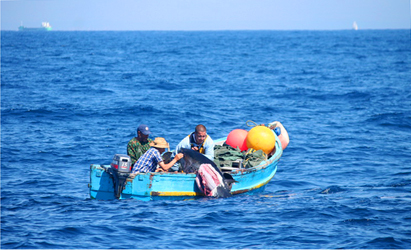The primary prey of killer whales in the Strait of Gibraltar is the bluefin tuna. All killer whales observed in this area hunt tuna by chasing individual fish until they become exhausted and can be overcome. However, a subset of pods also interact with a dropline tuna fishery which has developed since 1995. Here, authors investigated the social structure within and among social units (pods). Data suggested that social structure was shaped by maternal kinship, which appears to be a species-specific trait, but also by foraging behavior, which is less common at the intra-population level. At the start of the study, only one cohesive pod interacted with the fishery, which during the course of the study underwent fission into two socially differentiated pods. Social structure within these two fishery-interacting pods was more compact and homogenous with stronger associations between individuals than in the rest of the population. Three other pods were never seen interacting with the fishery, despite one of these pods being regularly sighted in the area of the fishery during the summer. Sociality can influence the spread of the novel foraging behaviors and may drive population fragmentation, which, in this example, is already a critically small community. Observations of social changes in relation to changes in foraging at the earliest stages of diversification in foraging behavior and social segregation may provide insights into the processes that ultimately result in the formation of socially isolated discrete ecotypes in killer whales. informacion[at]ebd.csic.es: Esteban et al (2015) Maternal kinship and fisheries interaction influence killer whale social structure. Behav Ecol Sociobiol DOI 10.1007/s00265-015-2029-3
http://link.springer.com/article/10.1007/s00265-015-2029-3#

 Las altas temperaturas están provocando que las lagunas y las marismas de Doñana pierdan agua rápidamente
Las altas temperaturas están provocando que las lagunas y las marismas de Doñana pierdan agua rápidamente




